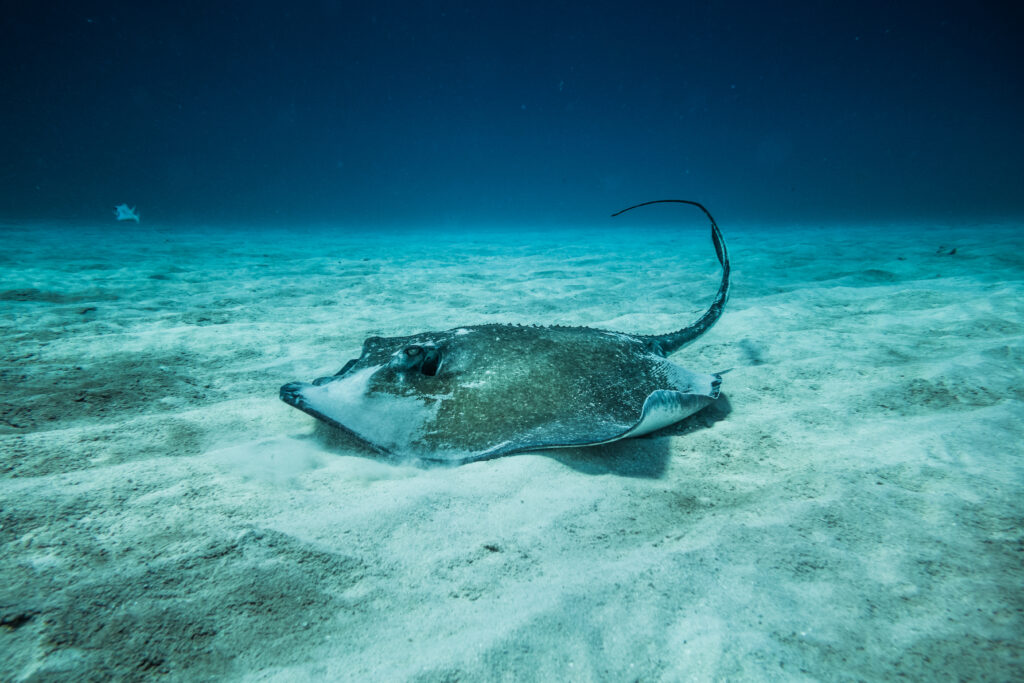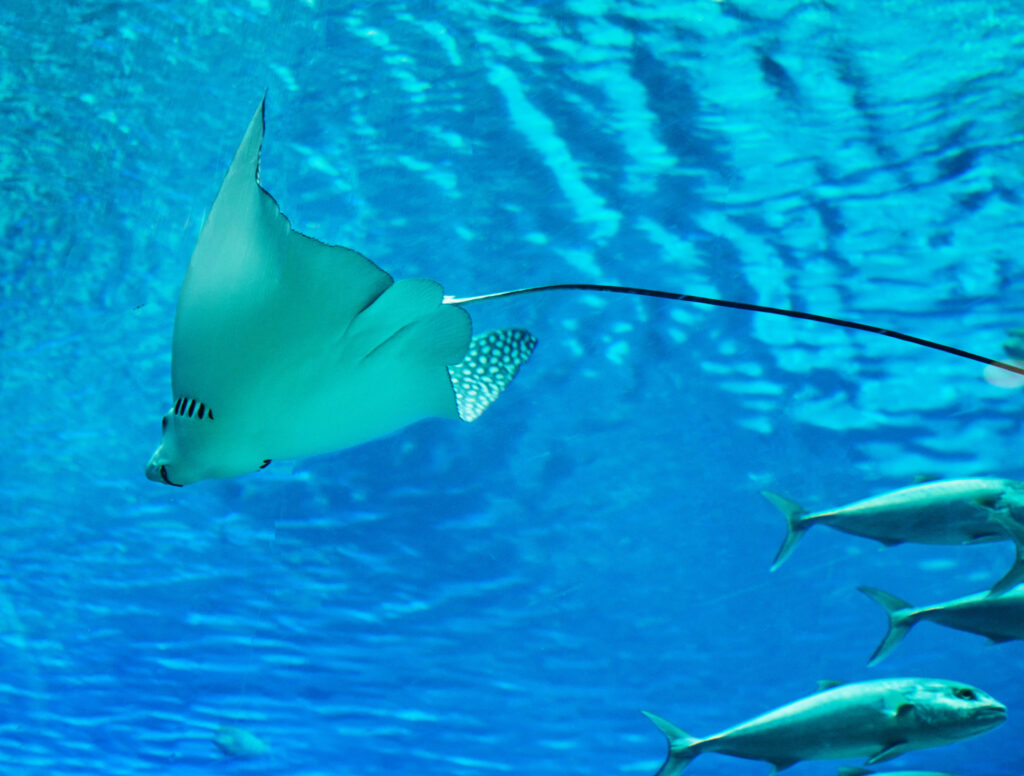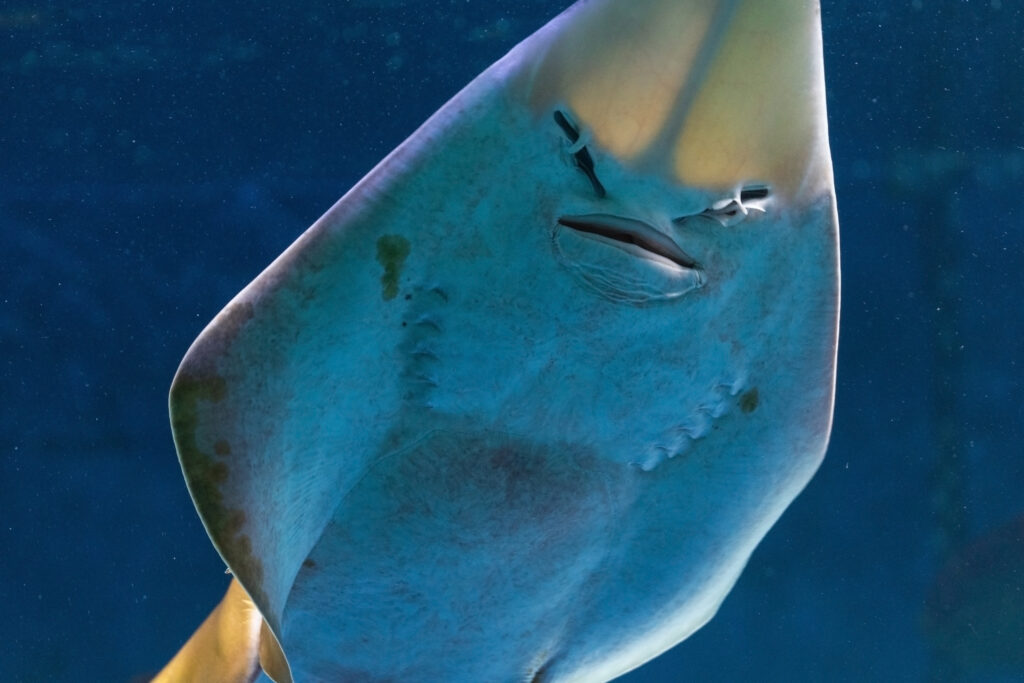The Complete Guide to Stingrays: 10 Fascinating Facts About These Unique Creatures

Stingrays are one of the most iconic and recognizable fish found in oceans around the world. From their flat, diamond-shaped bodies to their infamous venomous tail spines, stingrays have captivated our imagination for ages.
But there’s much more to learn about these amazing marine animals beyond just their appearance and defense mechanisms. Stingrays have several cool adaptations and behaviors that make them unique among fish species.
In this complete guide, you’ll discover 10 fascinating facts covering stingray anatomy, habitat, reproduction, evolution, and more. By the end, you’ll have a deeper appreciation for these often misunderstood creatures of the sea.
An Overview of Stingray Characteristics
Before diving into the cool trivia, let’s review some key facts about stingrays:
- There are over 200 species of stingrays found in tropical and temperate ocean waters worldwide. Most live along the coasts and continental shelves.
- Stingrays are closely related to sharks and are classified as cartilaginous fish. This means they have a skeleton made of cartilage instead of bone.
- These fish have a flat, diamond or round-shaped body with enlarged pectoral fins that allow them to swim by undulating through the water.
- They lack an anal fin and have eyes on top of their head along with spiracles behind the eyes to take in water.
- The tail contains one or more serrated, venomous spines used for self-defense against predators.
- Stingrays range greatly in size from the 50 cm long blue-spotted ribbontail ray to the giant freshwater stingray that can grow over 16 feet long and weigh up to 1,300 pounds1!
Now that you’re familiar with the general anatomy and classification, let’s get into those cool facts!
10 Fascinating Stingray Facts

1. Electroreception helps stingrays find food
Stingrays don’t rely primarily on their eyesight to locate prey like many fish. Instead, they have special electroreceptive organs around their mouth called ampullae of Lorenzini2. These gel-filled pores detect the natural electrical fields produced by potential food sources like small fish, crabs, and shrimp buried in the sand. By honing in on these electric signals, stingrays can precisely pinpoint prey even in murky water or while buried themselves.
2. Camouflage makes stingrays masters of disguise
The flattened bodies of stingrays allow them to conceal themselves extremely well in their ocean-floor habitats. By burying in sediment or coral reefs, stingrays can become nearly invisible to both prey and predators. Some species even actively camouflage by changing color to better match their surroundings. This helps them avoid threats while also sneaking up on unwitting meals.
3. The stinger tail is a dangerous weapon

The infamous stinger found on stingray tails is not a stinger at all. It is a modified dorsal fin spine that has serrated edges and venom glands at its base. By lashing their tail in a whip-like fashion, stingrays can inflict painful puncture wounds with the spines that also release venom to further disable attackers or prey. Barb muscles in the tail allow the spine to be raised or lowered for defensive purposes.
4. Stingrays have poor eyesight
Despite having eyes located on the top of their heads, stingrays don’t rely heavily on vision. They have relatively poor eyesight compared to many other fish. As mentioned earlier, electroreception and touch sensations in their fins are the primary senses used for finding food and navigating their environment. But the top-mounted eyes do give stingrays a wide field of view to watch for potential dangers lurking above them.
5. They have live births like mammals
Stingrays do not lay eggs like most fish. Instead, they display viviparity where the young develop within the mother’s body and are born live and fully developed. Litters can contain anywhere from 2-6 pups depending on the species. This reproductive strategy gives stingray offspring a greater chance of early survival compared to vulnerable egg clutches.
6. Short gestation periods

In addition to live births, some stingray species have remarkably short gestation periods before giving birth. The masked stingaree for example has the shortest known gestation period of any vertebrate at just 39 days. Compare this to the 9-month gestation for humans! Short gestations allow certain stingray populations to quickly produce more offspring and boost their numbers.
7. Ancient ancestry
As mentioned earlier, stingrays are closely related to sharks. In fact, fossils show that stingrays most likely evolved from shark-like ancestors over 150 million years ago during the late Jurassic Period. These primitive extinct stingrays had more shark-like bodies and teeth. Over millions of years of evolution, these fish adapted more flattened body shapes and longer tails better suited for life along the seafloor.
8. Solitary but can form groups
Stingrays tend to be solitary for most of the year, only coming together to breed or migrate. However, they are known to form large seasonal aggregations or “fevers” especially along migration routes. These groups can contain thousands of stingrays all moving together along coastlines to seek feeding grounds or warmer waters depending on the time of year.
9. Unique swimming style
Unlike most fish that propel themselves with rear fins and tail movements, stingrays swim through the water using an undulating or wave-like motion of their large pectoral fins. This is known as punting or undulatory locomotion. Alternating movements of the disk-shaped fins provide thrust and enable excellent maneuverability. Some species can even propel themselves entirely off the seabed using this technique.
10. Habitat varies by species
While often associated with tropical shallows, different stingray species inhabit diverse aquatic environments. These include ocean coastlines, lagoons, estuaries, and mangroves, and some even venture far upstream into freshwater rivers and streams. A few species are also found in more offshore open ocean habitats. Their flat shape makes stingrays suited for life along the bottom in most aquatic ecosystems.
Stingray Behavioral Facts and Adaptations

In addition to the cool facts above, stingrays have several other fascinating behavioral adaptations and instincts that improve their chances of survival:
- Defense – The venomous tail spine is the most obvious defense, but stingrays also rely on stealth and camouflage by hiding in the sand to avoid danger. Some may also display aggression or threaten with spread fins.
- Diet – Most species feed on a variety of shrimp, small fish, mollusks, and crustaceans. Their crushing teeth and electroreception allow them to find buried prey.
- Migration – Some species migrate long distances following warm ocean currents and food sources. These migratory “fevers” can number in the thousands of rays.
- Communication – Stingrays likely use electrical signals to detect prey/predators but may also communicate with touch, sound, and chemical cues.
- Speed – While not the fastest swimmers, some species can reach bursts of 25 mph aided by their undulating fins.
- Intelligence – Stingrays have relatively large brains and display complex behaviors including cooperation, likely giving them higher intelligence than most fish.
Where and How to Observe Stingrays
Now that you know more about these cool creatures, you may be interested in seeing stingrays for yourself. Here are some tips on the top spots for getting an up-close look:
- Marine parks – Many aquariums and marine parks provide stingray touch pools and exhibits that allow for close observation.
- Snorkeling – You can often spot stingrays in shallow tropical areas, but be respectful and give them space.
- Fishing/diving tours – Guided stingray catching and diving tours will take you to areas inhabited by rays.
- Sandy beaches – Look for stingrays burrowing in the sand right offshore in warm coastal regions.
When viewing stingrays, follow all park/tour guidelines, avoid touching wild rays, and be conscious not to accidentally step on a buried ray!
Pro tip: Stingrays are often more active at night or during incoming tides when feeding.

Key Takeaways on Stingray Facts
To recap this complete guide on stingrays, here are the key takeaways to remember:
- Stingrays are cartilaginous fish closely related to sharks with flattened bodies and enlarged pectoral fins.
- Unique adaptations like electroreception, live births, and venomous tail spines improve their survival.
- Excellent camouflage and stealth make stingrays highly effective hunters and difficult for predators to catch.
- These fish display fascinating behaviors like seasonal migrations and cooperate in large groups.
- Stingray species inhabit diverse marine and freshwater habitats but often feed on similar invertebrates.
- While intimidating, stingrays are not aggressive towards humans unless threatened.
- With observation precautions, it’s possible to safely view stingrays in both captive and wild settings.
Learning more about stingray abilities and connections to their environment gives us a greater appreciation for these awesome marine animals. Hopefully, this guide gave you some new insight into the cool features of rays!
Frequently Asked Questions About Stingrays
Still, have some lingering questions about these fascinating fish? Here are answers to some common stingray FAQs:
How dangerous are stingrays?
While stingray stings can be extremely painful and cause infection, death from a sting is very rare. Stingrays only attack in self-defense and pose little threat if left alone and given space.
How do stingrays reproduce?
Unlike most fish, stingrays give birth to live young instead of laying eggs. This is called viviparity. The mother will carry the pups until they are fully developed before giving birth.
Why do stingrays bury themselves in the sand?
Burrowing in sediment or hiding within reef crevices allows stingrays to ambush prey and also helps conceal themselves from predators. Their flat bodies make rays excellent at this camouflage.
What eats stingrays?
Sharks are the most common predators of stingrays. Their tough cartilage skeletons and venomous spines deter most other species from feeding on them. However, sea lions, crocodiles, and some large fish do occasionally prey on rays.
How long do stingrays live?
It depends on the species, but many stingrays live 20-30 years. Some of the larger species have been known to reach 50+ years in ideal conditions.
How smart are stingrays?
Stingrays have demonstrated problem-solving, cooperation, likely individual recognition of other rays, and advanced learning abilities. This suggests they have higher intelligence compared to most fish.
Can you eat stingrays?
Stingray meat is edible and consumed in many Asian and coastal cuisines after the venomous spines and skin are removed. However, sustainability and mercury contamination are concerns with eating wild stingrays.
Where do stingrays live?
Stingray species inhabit tropical and subtropical coastal waters around the world. Several freshwater stingray species are also found in large rivers and estuaries in South America and Southeast Asia.
Why do stingrays jump out of the water?
Breaching, or leaping out of the water, is thought to help detach parasites, evade predators, move between areas, or possibly attract mates.
This covers some of the most common stingray questions people have. Always research reliable sources to learn more about these cool animals! Let me know if you need any clarification or have additional questions.





